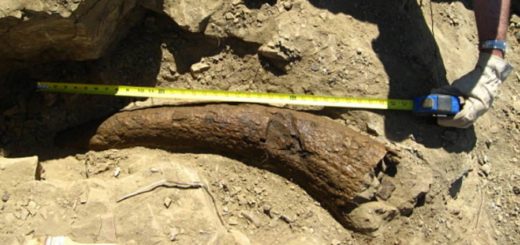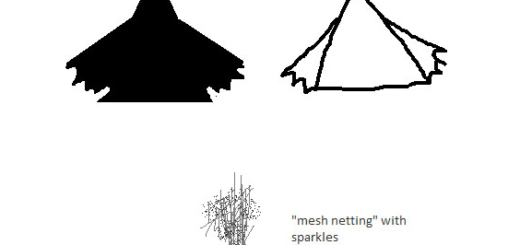‘Chasing UFOs,’ New National Geographic Show, Reexamines Famous Flying Saucer Sightings (VIDEO)

For most people, looking for UFOs is more of a hobby than an actual occupation. Not so for Erin Ryder, James Fox and Ben McGee, members of a dynamic team starring in the new television series, “Chasing UFOs,” that premieres Friday on the National Geographic Channel.
One can imagine the theme music of the old “X-Files” series playing in the heads of Ryder, Fox and McGee as they travel the country looking for the truth behind reported unexplained UFO encounters, alien abduction and military cover-ups.
The three investigators bring different points of view as they chase UFOs.
Ryder, a thrill-seeking adventurer who costars on the Syfy Channel’s “Destination Truth” series and also the “Chasing UFOs” tech supervisor and lead researcher, calls herself the “skeliever” of the group — sort of a half-skeptic, half-believer.
“I couldn’t find a word to best describe how I felt my stance was and I really am somewhere between a skeptic and a believer,” she told The Huffington Post. “I’ve always had a fondness for the strange and unusual, and I go on the facts and base my findings from the evidence we collect and the testimonies we hear.”
Fox, who is often referred to as a UFOlogist and has produced two previous UFO documentaries, “Out of the Blue” and “I Know What I Saw,” is the believer here. “My goal is to create something that is entertaining, yet very informative and also dispels the myth that there’s nothing more to UFOs than swamp gas, misidentified aircraft and mass hallucinations,” Fox told HuffPost.
McGee, a geologist, field explorer and aerospace consultant, is the scientific skeptic of the group. “This material tends to be so toxic for scientists, so my first impulse was to run for the hills,” McGee told HuffPost. “But I believe very strongly in education and science outreach, and I thought this would actually be a vehicle to help engage people in the conversation about our place in the universe and the possibility of extraterrestrial life.”
Watch part of episode 1 of “Chasing UFOs,” “Texas Is for Sightings.”
So, what can viewers expect to see over the eight-episode arc as the team talks to eyewitnesses, examines photographic evidence and even tries to find their own evidence to present?
In “Chasing UFOs,” the investigators visit several states to try to make credible sense of lights spotted in the skies, in cases involving numerous eyewitnesses and photographic evidence, always mindful that most UFO reports can be explained as misidentified conventional aircraft, planets and meteorological phenomena.
One segment brings the team to Roswell, N.M., the location of the legendary, albeit alleged, UFO crash of 1947. Ryder, Fox and McGee visit that famous site with metal detectors and find an old button, shown below, that appears to be from a military uniform or jacket. This, they speculate, might confirm that someone associated with the military had traveled to the field at some point.
But does it prove that a UFO crash landed there? To be fair, no. But the investigators are on the lookout for compelling evidence that some UFOs might indeed be unexplained. Even the smallest pieces of evidence could be parts of the larger puzzle.
“Our job, in many of our programs, is to explore the unknown, and this is a way into a topic that, while it’s been done before, we hope it hasn’t been done in this particular way,” said Michael Cascio, National Geographic Channel’s executive vice president of programming.
“UFOs is a topic of endless fascination, not just for me, but for viewers. And we have an opportunity here to look at UFO cases in a format that allows you to go into detail and enjoy the ride as you go,” Cascio told HuffPost.
“We dig up as much information as we can and say to the viewer, ‘Here’s what we’ve discovered,'” Cascio added. “We also hope that [our team’s] personalities come out and that viewers relate to them and find them interesting and entertaining.”
Among the subjects of one of the last episodes of the first season of “Chasing UFOs” is something odd that reportedly happened in Brazil’s coffee production town of Varginha in 1996 and reported by multiple civilian and military eyewitnesses.
“It’s the Roswell of Brazil,” said Fox. “An aerial object was spotted coming down and appeared to crash. Within 24 hours, people reported seeing two creatures in the town, which by then had been closed off by the military.
“While nobody actually called them ETs, they were described as 5-foot-tall creatures (see illustration at left) with dark-brown, oily-looking skin, split toes, red eyes and ridges on their skulls, and they were reported looking feeble or weak,” Fox added. “The hardest thing to do is to go and have an open mind and no preconceived notions that will taint the investigation,” said Ryder. “To be completely objective is what we try to do and a lot of the time, I still end up in the middle somewhere.”
As the scientist of the team, McGee said he’s open to investigating any question anyone has and to illustrate the process of what it takes to make a scientific determination.
“We have a social responsibility to try and help people understand what it is up in the sky, even if it is a low-angle star blinking or maybe something exotic,” McGee said. “I’d be no less excited if something truly strange ended up being upper atmospheric electrical phenomena we don’t know about yet.”
National Geographic’s “Chasing UFOs” premieres Friday, June 29, at 9 p.m. ET and PT, and is followed by a second episode at 10 p.m.



 Creators of mankind
Creators of mankind Description of “Tall white aliens”
Description of “Tall white aliens” Where they came from?
Where they came from? About hostile civilizations
About hostile civilizations The war for the Earth
The war for the Earth “Tall white aliens” about eternal life
“Tall white aliens” about eternal life Video: “Nordic aliens”
Video: “Nordic aliens” Aliens
Aliens Alien encounters
Alien encounters The aliens base
The aliens base UFO
UFO Technology UFO
Technology UFO Underground civilization
Underground civilization Ancient alien artifacts
Ancient alien artifacts Military and UFO
Military and UFO Mysteries and hypotheses
Mysteries and hypotheses Scientific facts
Scientific facts


















